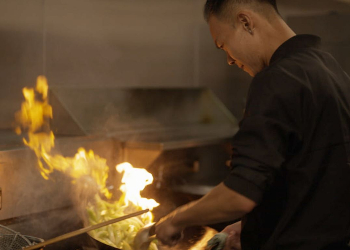A Cultural Feast: the iconic Golden Dragon Museum’s new restaurant
If you stand quietly in Bendigo, you can feel the presence of dragons.
Bendigo became the beating heart of the Victorian gold rush in the 1850s and was home to prospectors from all over the world.
It was a particularly popular destination for Chinese prospectors, who named the area 'Dai Gum San', meaning Big Gold Mountain.
The story of these prospectors, their culture and their unique contribution to the history of Bendigo is told at the Golden Dragon Museum.
 The museum boasts a stunning collection that includes documents, porcelain, jade and dragons.
The museum boasts a stunning collection that includes documents, porcelain, jade and dragons.
In fact, the museum is home to the world's longest and oldest imperial dragons. This includes Loong, Bendigo's oldest dragon, who took part in Melbourne's Federation procession in 1901.
Soon, the museum will also be home to Hawker at the Museum, a first-class indoor and outdoor dining experience featuring delicious Chinese cuisine.
Funded by $1 million from the Victorian Government's Regional Infrastructure Fund and $200,000 from the City of Greater Bendigo, the creation of Hawker at the Museum is part of upgrade works to the front of the museum.
Golden Dragon Museum CEO Hugo Leschen is excited for visitors to experience the facilities first-hand.
"Soon we will have a wonderful restaurant, right next to a world-class collection,” he said.
The restaurant and museum will be well-placed to offer an unforgettable experience for visitors to Bendigo, especially during the 2026 Commonwealth Games, when the city serves as one of four regional hubs.
At its heart, Hugo explains that the Golden Dragon Museum tells powerful stories that can be universally appreciated.
"The stories we tell here are stories of people coming to Australia and making it their home. And that's a great Australian story."
Hawker at the Museum is set to open in August 2022.
We acknowledge and recognise the Traditional Owners of the land on which The Golden Dragon Museum sits, the Dja Dja Wurrung People.
